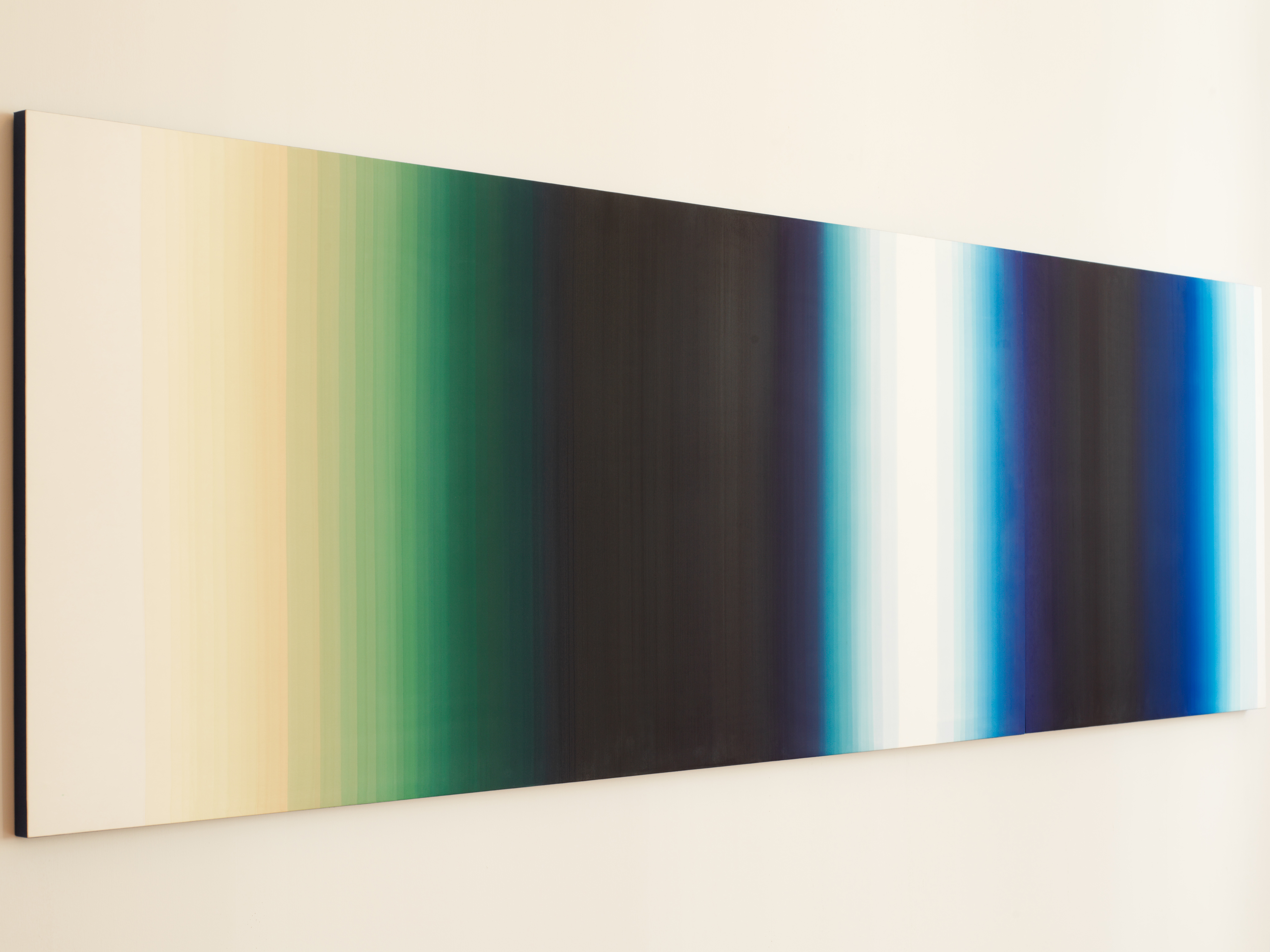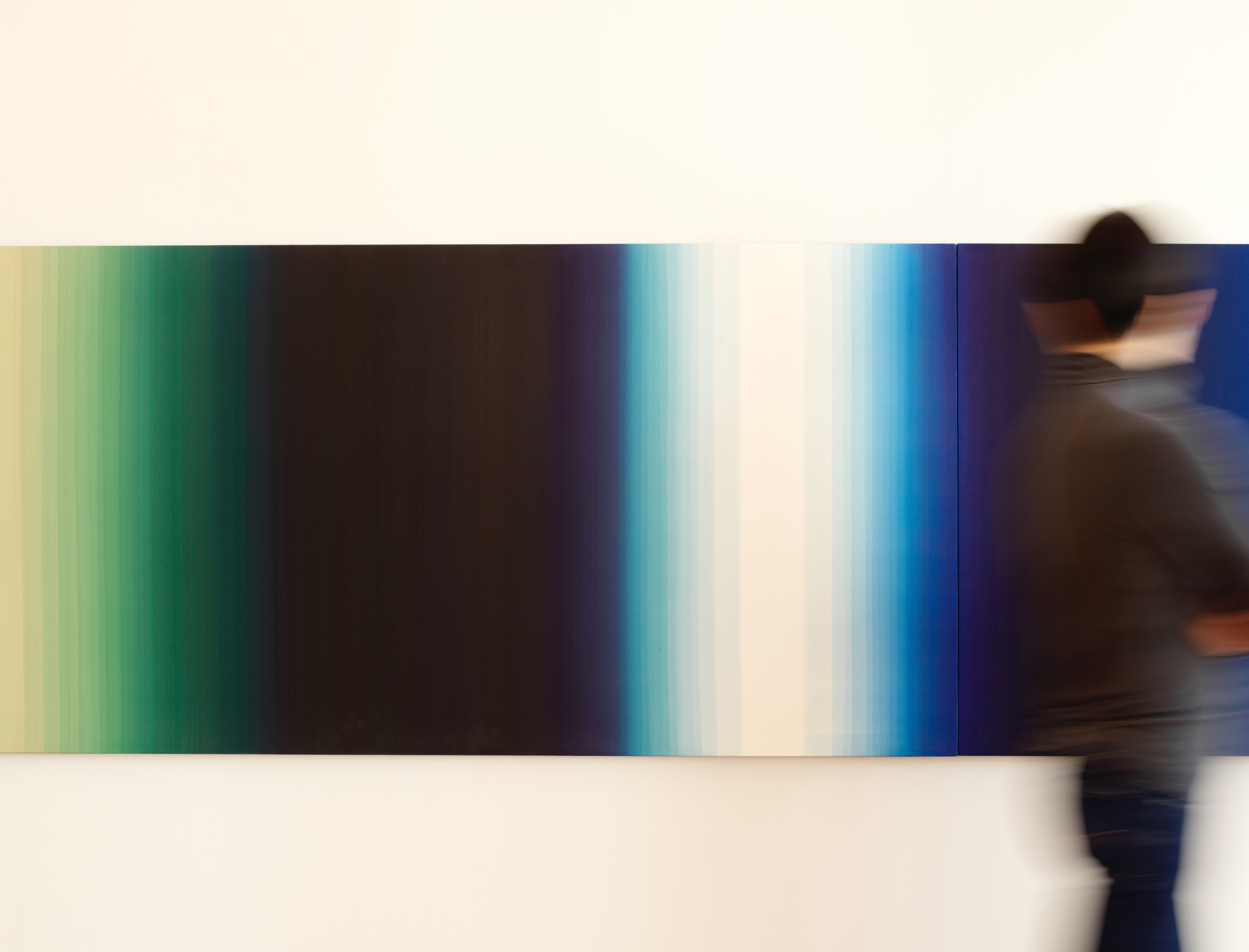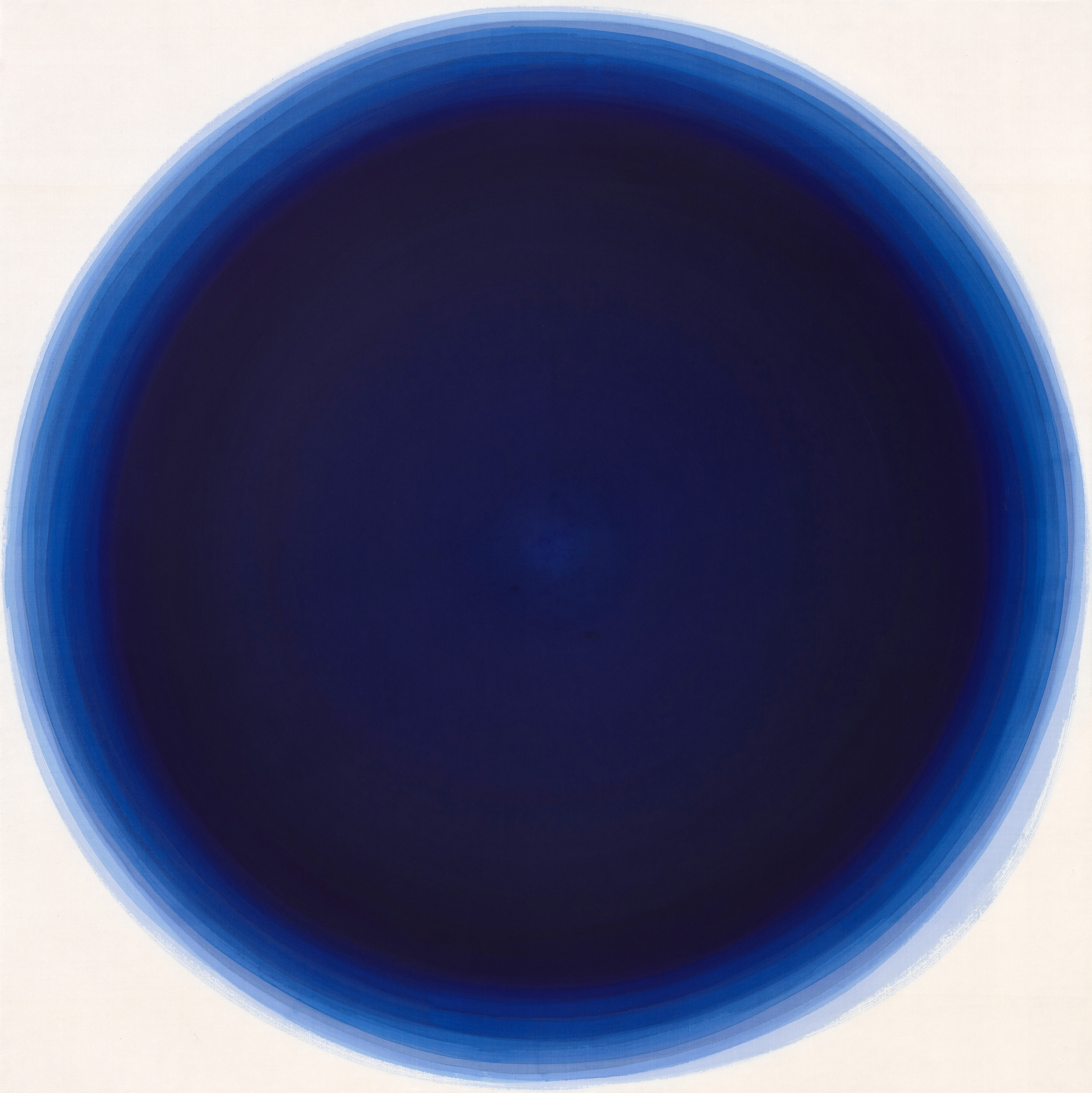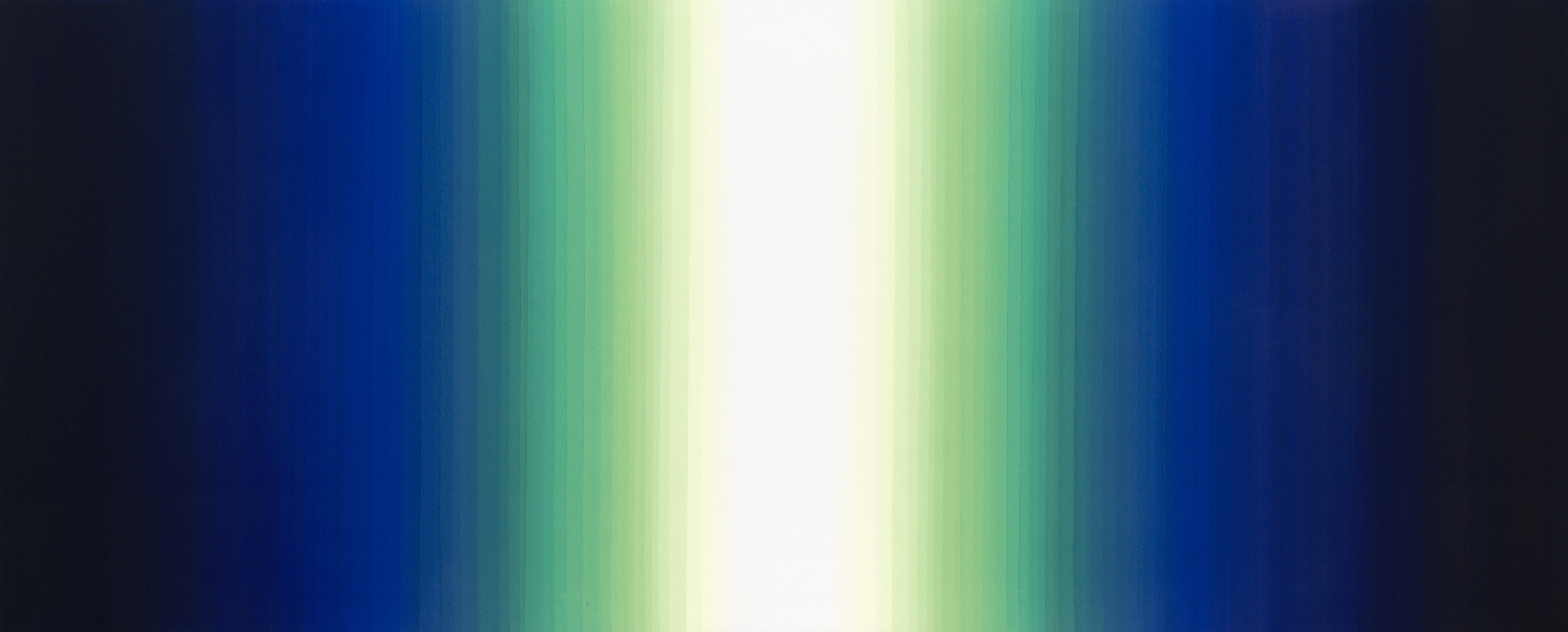Depth of Being
존재의 깊이 2021
The Depth of Being Series which I have engaged in is the outcome of the exploration for “depth” as indicated in the title. “Depth” which I have borrowed is the essential element to expand a dimension of awareness—from a plane [two-dimensional] to a cubic existence [three-dimensional]—and at the same time, implies various qualitative elements—time, diversity, value, experience, etc.—that is, numerous things that cannot be replaced with quantities. This exists in line with resistance against a phenomenon in which diversity within the values of society decreases and many different things are standardized as one standard and replaced with figures according to my experiences. Even if resistance does not fit the process of painting planes, resistance is developed not merely by means of breaking with the convention or negating something. Rather, I intend to broaden the gap of the current trend and expand the potential for diversity by the positive means of increasing the depth.
최근 진행하고 있는 ‘존재의 깊이’ 시리즈는 제목에도 나와 있듯 ‘깊이’에 관한 탐구의 결과물이다. 본인이 차용하는 ‘깊이’는 인식의 차원을—평면[2차원]에서 입체[3차원]로—확장하기 위한 필수적인 요소인 동시에 다양한 질적인 요소들—시간, 다양성, 가치, 경험 등—양적으로 치환될 수 없는 많은 것들을 함축한다. 이는 본인이 경험하는 사회 안에서 가치의 다양성이 줄어들고 서로 다른 것들이 하나의 기준으로 획일화되거나 수치로 환원되는 현상에 대해 저항하고자 하는 맥락에 놓여있다. 평면 회화 작업에 저항이 어울리지 않을지 모르나 저항은 틀을 깨거나 어떤 것을 부정하는[negaitve] 방식으로만 이루어지지 않는다. 오히려 본인은 축[Depth]을 더하는 긍정적인[positive]인 방식으로 현 흐름에 틈을 벌리고 다양성의 여지를 확장하고자 한다.
최근 진행하고 있는 ‘존재의 깊이’ 시리즈는 제목에도 나와 있듯 ‘깊이’에 관한 탐구의 결과물이다. 본인이 차용하는 ‘깊이’는 인식의 차원을—평면[2차원]에서 입체[3차원]로—확장하기 위한 필수적인 요소인 동시에 다양한 질적인 요소들—시간, 다양성, 가치, 경험 등—양적으로 치환될 수 없는 많은 것들을 함축한다. 이는 본인이 경험하는 사회 안에서 가치의 다양성이 줄어들고 서로 다른 것들이 하나의 기준으로 획일화되거나 수치로 환원되는 현상에 대해 저항하고자 하는 맥락에 놓여있다. 평면 회화 작업에 저항이 어울리지 않을지 모르나 저항은 틀을 깨거나 어떤 것을 부정하는[negaitve] 방식으로만 이루어지지 않는다. 오히려 본인은 축[Depth]을 더하는 긍정적인[positive]인 방식으로 현 흐름에 틈을 벌리고 다양성의 여지를 확장하고자 한다.




Depth of Being
pigment on silk, paper, wood panel, 296x88cm, 2021


Depth of Being: About the Depth, You Should Have Perceived
pigment on silk, paper, wood panel, 140x88cm, 2021
Every process is carried out in the same manner as the practice of asceticism. In the beginning, viscosity and paint with the lowest concentration possible is placed on silk. Since the depth and concentration of the colors are expressed by concentration and the number of each type of paint, the deepest center requires several hundred overlaps at least. Since I do not receive any assistance from machines throughout the entire work process, every plane comes with minute differences and such changes record and imply time. This ascetic process takes up considerable time, reiteration and labor in the form of nutriments. Interestingly, the result thereof contributes to extending such time to the viewers.
모든 작업은 수행과 같은 방식으로 이루어진다. 최초 가장 낮은 농도의 점성과 안료부터 비단 위에 올라간다. 색의 깊이와 농도는 각 안료의 점성과 쌓인 횟수를 통해 표현되기 때문에 가장 깊은 중심은 최소 수백 번의 중첩을 필요로 한다. 작업 전 과정에 있어서 어떠한 기계적 도움을 받지 않기 때문에 모든 면에는 미세한 차이가 존재하게 되고 그 변화는 시간을 기록하고 함축한다. 이러한 수행적 작업은 시간과 반복, 노동을 자양분으로 삼는다. 그 결과는 흥미롭게도 관람자에게 그만큼의 시간을 연장하는데 기여한다.
모든 작업은 수행과 같은 방식으로 이루어진다. 최초 가장 낮은 농도의 점성과 안료부터 비단 위에 올라간다. 색의 깊이와 농도는 각 안료의 점성과 쌓인 횟수를 통해 표현되기 때문에 가장 깊은 중심은 최소 수백 번의 중첩을 필요로 한다. 작업 전 과정에 있어서 어떠한 기계적 도움을 받지 않기 때문에 모든 면에는 미세한 차이가 존재하게 되고 그 변화는 시간을 기록하고 함축한다. 이러한 수행적 작업은 시간과 반복, 노동을 자양분으로 삼는다. 그 결과는 흥미롭게도 관람자에게 그만큼의 시간을 연장하는데 기여한다.


Depth of Being
pigment on silk, paper, wood panel,128x128cm, 2021

Its Depth
pigment on silk, paper, wood panel, 80×200cm, 2022

Illusion for the Standards
pigment on silk, paper, wood panel, 38×38cm, 9 pieces, 2021
To realize
planes as something cubical—from two-dimensional to three-dimensional—at least
one more dimension is required. However, a change in dimension lies in my one
step instead of a change in an object. The moment I move one step from the
fixed position, I am able to see the side, feel thickness and experience depth.
Those who look at the world from a two-dimensional perspective can only look at
a phenomenon in which those boundaries are crashed into. In contrast, those who
look at the world from a three-dimensional perspective can look at a phenomenon
where those boundaries are not overlapped, but exist together in a back and
forth and upward and downward trajectory. The horizon cannot be viewed as a
boundary between the sky and the sea, but a side where the sky and the sea
meet.
평면을 입체로 인식하기 위해서는—2차원에서 3차원으로—최소한 하나의 차원이 더 요구된다. 그런데 차원의 변화는 대상의 변화에 있기보다 오히려 나의 한 걸음에 있다. 고정된 자리에서 한 걸음 이동하는 순간 나는 옆을 볼 수 있고, 두께를 느끼고 깊이를 경험할 수 있다. 세상을 2차원으로 보는 이는 경계들이 부딪히는 현상밖에 보지 못한다. 그러나 세상을 3차원으로 보는 이는 그것들이 겹쳐있는 것이 아니라 앞뒤, 위아래 서로 함께 있는 모습을 볼 수 있다. 수평선은 하늘과 바다의 경계가 아니라 하늘과 바다가 만나는 면이다.
평면을 입체로 인식하기 위해서는—2차원에서 3차원으로—최소한 하나의 차원이 더 요구된다. 그런데 차원의 변화는 대상의 변화에 있기보다 오히려 나의 한 걸음에 있다. 고정된 자리에서 한 걸음 이동하는 순간 나는 옆을 볼 수 있고, 두께를 느끼고 깊이를 경험할 수 있다. 세상을 2차원으로 보는 이는 경계들이 부딪히는 현상밖에 보지 못한다. 그러나 세상을 3차원으로 보는 이는 그것들이 겹쳐있는 것이 아니라 앞뒤, 위아래 서로 함께 있는 모습을 볼 수 있다. 수평선은 하늘과 바다의 경계가 아니라 하늘과 바다가 만나는 면이다.